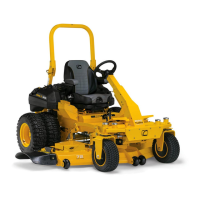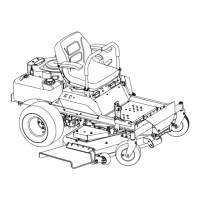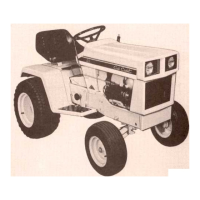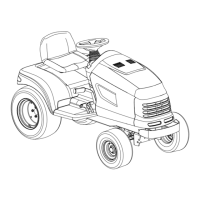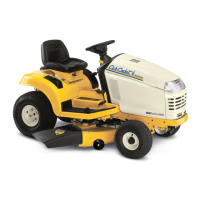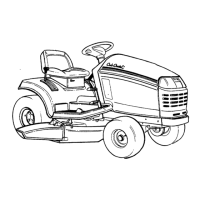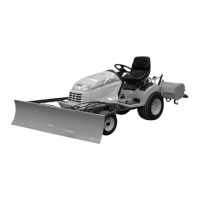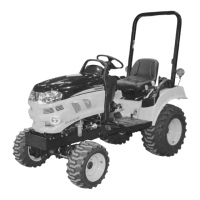2
Important Safe Operation Practices 2
Training
1. Read the Operator’s manual and other
training material. If the operator(s) or
mechanic(s) cannot read English it is the
owner’s responsibility to explain this
material to them.
2. Become familiar with the safe operation
of the machine, operator controls, and
safety signs.
3. All operators and mechanics should
be trained to operate or service the
equipment. The owner is responsible for
training them.
4. Never let children under the age of 16
or untrained people operate or service
the equipment. Local regulations may
further restrict the age of the operator.
5. The owner/operator can prevent and
is responsible for accidents or injuries
occurring to them, other people or
property.
General Operation
1. Read, understand, and follow all
instructions on the machine and in
the manual(s) before attempting to
assemble and operate. Keep this manual
in a safe place for future and regular
reference by each operator and for
ordering replacement parts.
2. Be familiar with all controls and their
proper operation. Know how to stop
the machine and disengage the controls
quickly.
3. Do not allow anyone to operate or
maintain this machine who has not read
the manual. Never permit children under
the age of 16 to operate this machine.
4. Do not remove any shields, guards,
labels or safety devices. If a shield,
guard, label or safety device is damaged
or does not function, repair or replace it
before operating the machine.
5. To help avoid blade contact or a thrown
object injury, keep bystanders, helpers,
children and pets at least 75 feet from
the machine while it is in operation. Stop
machine if anyone enters the area.
6. Thoroughly inspect the area where the
equipment is to be used. Remove all
stones, sticks, wire, bones, toys, and other
foreign objects that could be picked
up and thrown by the blade(s). Thrown
objects can cause serious personal injury.
7. Evaluate the terrain to determine what
accessories and attachments are needed
to properly and safely perform the job.
Only use accessories and attachments
approved by the machine manufacturer.
8. Plan your mowing pattern to avoid
discharge of material toward roads,
sidewalks, bystanders and the like. Also,
avoid discharging material against a
wall or obstruction which may cause
discharged material to ricochet back
toward the operator.
9. Always wear appropriate clothing
and personal protective equipment
(e.g. safety glasses, long pants, gloves,
hearing protection , safety shoes, hard
hat) when operating or maintaining
this machine. Long hair, loose fitting
clothing or jewelry may get entangled
in moving parts. Follow all federal, state
and local guidelines regarding the use of
personal protective equipment.
10. For extended use of this product,
hearing protection is recommended.
11. Be aware of the mower and attachment
discharge direction and do not point it
at anyone. Do not operate the mower
without the discharge cover or entire
grass catcher in its proper place.
12. Do not put hands or feet near rotating
parts or under the cutting deck. Contact
with the blade(s) can amputate hands
and feet.
13. A missing or damaged discharge cover
can cause blade contact or thrown
object injuries.
14. Stop the blade(s) when crossing gravel
drives, walks, or roads and while not
cutting grass.
15. Watch for traffic when operating near or
crossing roadways. This machine is not
intended for use on any public roadway.
WARNING
This symbol points out important safety instructions which, if not followed, could endanger the personal safety and/or property of yourself and others. Read and follow all instructions in this
manual before attempting to operate this machine. Failure to comply with these instructions may result in personal injury. When you see this symbol. HEED ITS WARNING!
WARNING
California Proposition 65
Engine Exhaust, some of its constituents, and certain vehicle components contain or emit chemicals known to State of California to cause cancer and birth defects or other reproductive harm.
Battery posts, terminals, and related accessories contain lead and lead compounds, chemicals known to the State of California to cause cancer and reproductive harm. Wash hands after
handling.
DANGER
This machine was built to be operated according to the safe operation practices in this manual. As with any type of power equipment, carelessness or error on the part of the operator can
result in serious injury. This machine is capable of amputating hands and feet and throwing objects. Failure to observe the following safety instructions could result in serious injury or death.
16. Do not operate the machine while under
the influence of alcohol or drugs.
17. Mow only in daylight or good artificial
light.
18. Never carry passengers.
19. Back up slowly. Always look down and
behind before and while backing to
avoid a back-over accident.
20. Slow down before turning. Operate
the machine smoothly. Avoid erratic
operation and excessive speed. Be
aware of your direction of travel to avoid
accidents.
21. Disengage blade(s), set parking brake,
stop engine and wait until the blade(s)
come to a complete stop before
removing grass catcher, emptying grass,
unclogging chute, removing any grass or
debris, or making any adjustments.
22. Never leave a running machine
unattended. Always stop on level
ground, turn off blade(s), place drive
speed control levers in neutral, set
parking brake, stop engine and remove
key before leaving the operator position.
23. Use extra care when loading or
unloading the machine on a trailer or
truck. The machine should not be driven
on unstable, unsecured or inadequate
ramps because the machine could tip
over causing serious personal injury.
24. Check overhead clearances carefully
before driving under low hanging tree
branches, wires, door openings etc.,
where the operator and/or ROPS may
be struck which could result in serious
injury and/or machine tip over.
25. Muffler and engine become hot and can
cause a burn. Do not touch.
26. Disengage the blades, set the parking
brake to the ‘on’ position and make
sure the speed control lever are in the
neutral position before attempting to
start the engine. Only start the engine
from the operator’s position.
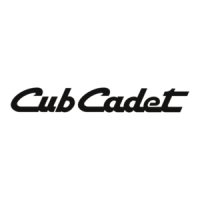
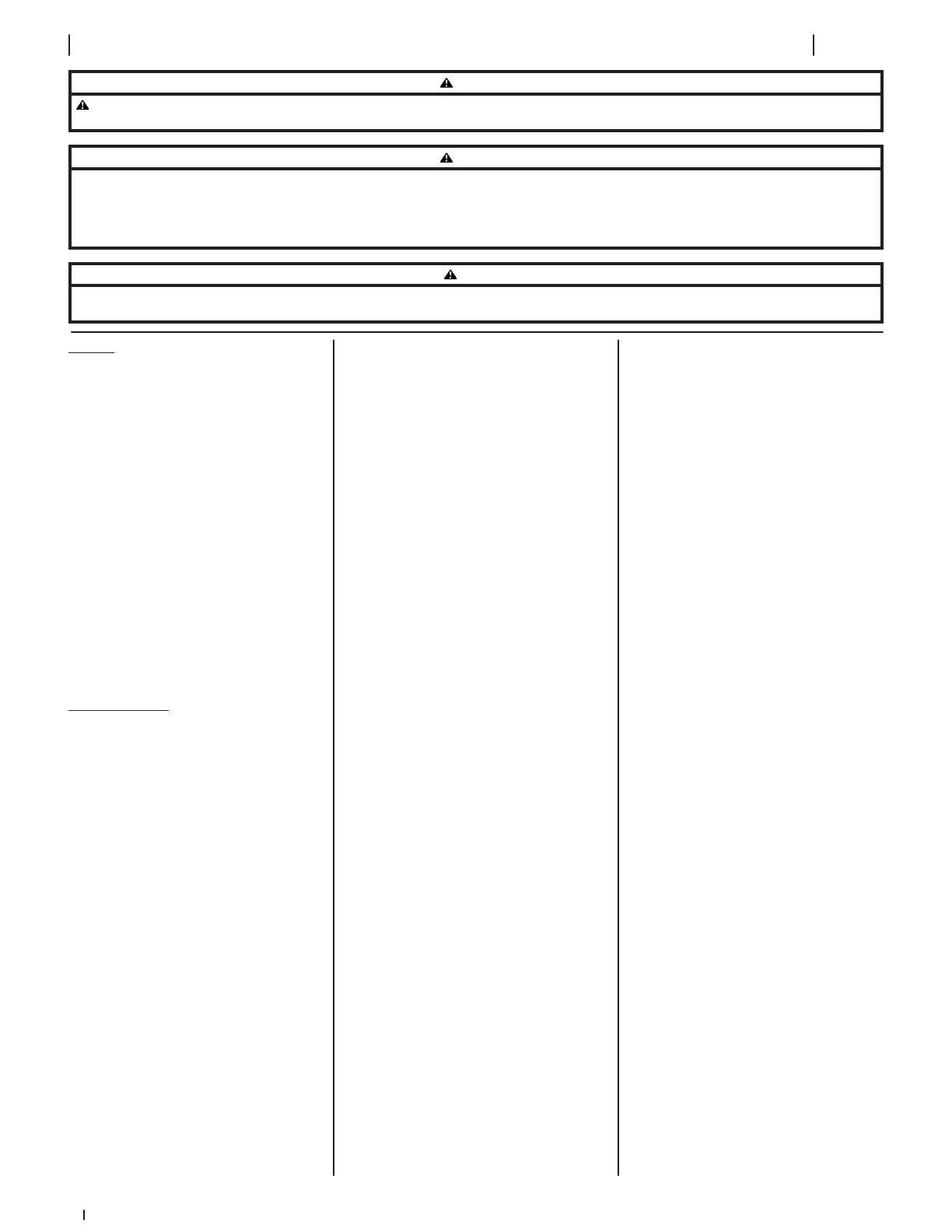